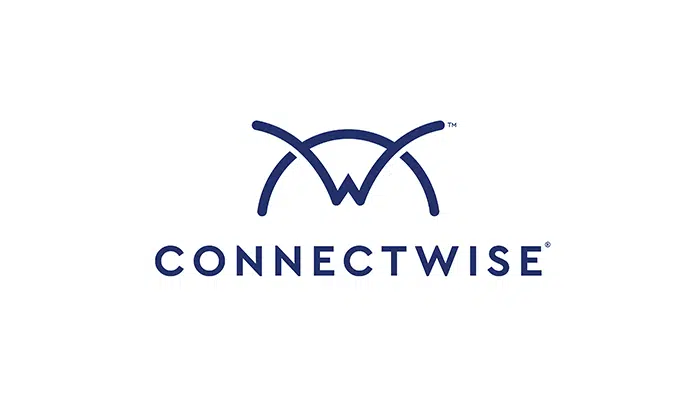
May 20, 2024 Information hub
ConnectWise Manage vulnerability CVE-2017-11727
Discovering vulnerabilities within widely used software is crucial for maintaining robust defenses. Recently, Securityium’s team identified a significant vulnerability in ConnectWise Manage, a popular business management software favoured by IT companies and Managed Service Providers (MSPs). This vulnerability, catalogued as CVE-2017-11727, poses a serious risk to users, highlighting the importance of continuous vigilance and proactive security measures.
The Vulnerability: CVE-2017-11727
CVE-2017-11727 is a cross-site scripting (XSS) vulnerability discovered in ConnectWise Manage version 2017.5. Identified by a security researcher from Securityium Pentester, this flaw involves the actionMessage parameter responsible for transmitting JSON data to the server. This vulnerability allows attackers to inject malicious JavaScript code into the actionMessage parameter, which then executes in the victim’s browser when they interact with a specially crafted link.
Vulnerability Details
- Vulnerability Name: CVE-2017-11727
- Affected Software: ConnectWise Manage (version 2017.5)
- Vulnerable Component: actionMessage parameter in the Contact.rails file
- Vulnerability Type: Cross-site scripting (XSS)
- CVSS Score: 6.1 (Medium severity)
The vulnerability allows attackers to craft URLs with manipulated actionMessage parameters containing harmful JavaScript code. Once a user clicks on such a link, the malicious code executes in their browser, leading to potential session ID theft, sensitive data theft, and other malicious activities.
How CVE-2017-11727 Works
The exploitation process for CVE-2017-11727 begins with attackers creating a URL that includes a manipulated actionMessage parameter. This parameter contains harmful JavaScript code. Attackers then use phishing schemes or misleading advertisements to lure users into clicking on the malicious link.
- Exploitation Steps
- Crafting Malicious Links: Attackers create URLs with a manipulated actionMessage parameter containing harmful JavaScript code.
- User Interaction: Users are enticed to click on these malicious links through phishing schemes or deceptive advertisements.
- Code Execution: When the link is clicked, the malicious JavaScript code executes in the user’s browser.
- Potential Damage: This can lead to unauthorized access to session IDs, theft of sensitive data, and other malicious activities.
- Proof of Concept Exploit Code
Here is an example of exploit code demonstrating CVE-2017-11727:
https://<domain>.com/v4_6_release/services/system_io/actionprocessor/Contact.rails?actionMessage=%7b%22payload%22%3a%22%7b%5c%22companyRecId%5c%22%3a19383%7d%22%2c%22payloadClassName%22%3a%22GetCompanyNameAction%vcdj%3cscript%3ealert(1111)%3c%5c%2fscript%3ex9uwe%22%7d&clientTimezoneOffset=420&clientTimezoneName=Pacific+Standard+Time
- Severity Level and Impact
The CVSS score for CVE-2017-11727 is 6.1, classifying it as a medium severity vulnerability. While it may not grant complete control over the affected system, the ability to execute arbitrary JavaScript in a victim’s browser can lead to substantial security breaches. Potential impacts include:
- Unauthorized Access to Session IDs: Attackers can hijack user sessions.
- Data Theft: Sensitive information can be stolen.
- Bypassing CSRF Protections: The vulnerability can bypass Cross-Site Request Forgery (CSRF) protections.
Mitigation Strategies for CVE-2017-11727
To mitigate the risks associated with CVE-2017-11727, consider the following strategies:
- Immediate Actions
- Update Your Software: Ensure that you are using the latest version of ConnectWise Manage, which includes necessary security patches.
- Enable Security Features: Configure browser security settings, including Content Security Policy (CSP), to block unauthorized JavaScript execution.
- Utilize Web Application Firewalls: Deploy firewalls to detect and prevent malicious traffic targeting the actionMessage parameter.
- Long-Term Practices
- Educate Users: Provide regular training on recognizing phishing attempts and avoiding suspicious links.
- Conduct Security Assessments: Regularly perform security assessments and penetration testing to uncover and address potential vulnerabilities.
- Maintain Patch Management: Keep all software up to date with the latest security patches to mitigate vulnerabilities.
Conclusion
The discovery of CVE-2017-11727 in ConnectWise Manage version 2017.5 underscores the ongoing need for vigilance in cybersecurity. This vulnerability, residing in the actionMessage parameter, exposes users to significant risks, including unauthorized JavaScript code execution, data theft, and session hijacking. Given the widespread use of ConnectWise Manage among IT companies and Managed Service Providers (MSPs), the potential impact of this vulnerability is considerable.
The mechanics of the exploit are both straightforward and powerful. Attackers can craft malicious links with a manipulated actionMessage parameter, enticing users to click through phishing schemes or misleading advertisements. Once interacted with, the malicious code executes in the user’s browser, leading to severe consequences.
CVE-2017-11727 highlights the importance of addressing vulnerabilities of all severity levels. Even vulnerabilities classified as medium can lead to significant security breaches if left unaddressed. Organizations using ConnectWise Manage should act swiftly to implement mitigation strategies, apply necessary patches, and maintain proactive security measures to safeguard their systems and data against evolving threats.
For further assistance with cybersecurity or to learn more about how Securityium can help protect your business, visit our website or contact our team of experts. Stay informed, stay secure, and safeguard your organization from emerging threats in the cybersecurity landscape.
